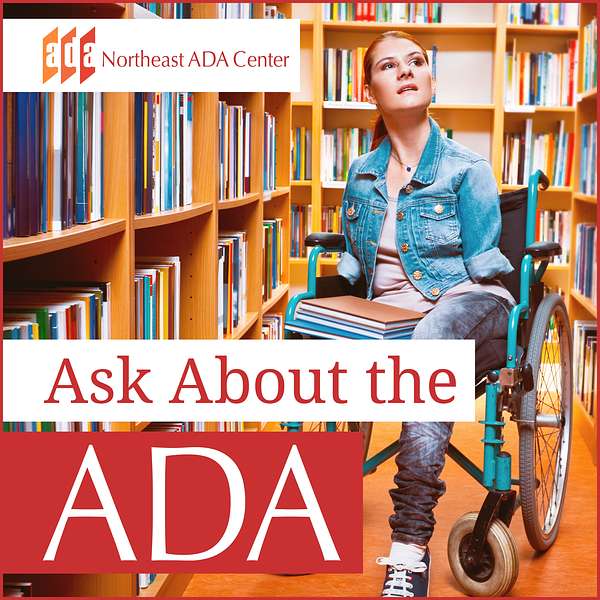
Ask About the ADA Podcast
Ask About the ADA Podcast
Ask About: Automatic Doors and Patient Transfers
In this edition of Ask About the ADA, we talk about two questions that the Northeast ADA has received. Are automatic doors required under the ADA? And does a doctor office or medical facility have to assist a person to transfer to medical equipment if they cannot do so independently? For a transcript of today's episode, please visit the Ask About the ADA podcast feed on BuzzSprout.
Read the blog version of the automatic doors question: Ask About the ADA - Automatic Doors
Read the blog version of the patient transfers question: Ask About the ADA - Patient Transfers
NortheastADA.org
>> Hello and welcome to the Ask About the ADA podcast where we discuss commonly asked questions and interesting topics related to the Americans with Disabilities Act. Here at the Northeast ADA, we get a lot of questions, and we're here to help people to understand how the ADA applies to everyday life and what it also might mean to you.
[ Music ]
Today's Ask About the ADA questions are about public accommodations. So let's dive in, and let's look at the first question. The person says, I have a small corner store that has double doors at the entrance. Recently one of my customers told me that, since the doors are not automatic, they do not comply with the ADA. Is this true? Well, before we look at the automatic doors directly, let's look at how the ADA applies in this situation. Under Title 3 of the law, businesses that are open to the public are referred to as public accommodations. A retail store would fall into this category. And so we know that this means the goods and services available at this store must be made accessible to people with disabilities. Providing an accessible entrance, therefore, is an ADA requirement, but the doors do not need to be automatic in order to be accessible. And that's key to keep in mind. Entrances are ADA compliant as long as they offer the necessary feature, such as sufficient clear width, appropriate operable hardware for the handles, et cetera, and an accessible approach area. The technical standards for accessible doors are detailed in the Section 404 of the 2010 ADA standards for accessible design. You can find those on ada.gov.
[ Music ]
Let's move to the next question, which comes from a healthcare provider. If a patient who uses a wheelchair comes into my healthcare practice but cannot transfer without assistance, do we have to help him? The answer to this question is, yes, you do have to assist the person. Now, the best way to really help the person is for them to be able to be independent and to be able to transfer by using an adjustable height table. Now, when having an adjustable height table is not readily achievable, it can't be done, then the next best option is to assist the person onto a high exam table by whatever means is necessary. Including lifting the person, if that needs to be done. The provider must take every precaution to ensure that, you know, this is done in a manner that's safe, not only for the patient, but also for the staff that are assisting. The facility should have policies, too, that require staff to be trained in the proper techniques to do this type of assisted transfer. Staff should also be able to access mechanical assistance, such as a Hoyer lift, for example.
[ Music ]
The two questions that we talked about today highlight that understanding the ADA may not be so simple. Many people assume that a feature that would make something more accessible is, therefore, necessarily mandated by the ADA. For example, an automated door or an adjustable height exam table. But, in fact, they may not be. Even so, the spirit of the ADA to ensure equal access and equal opportunity still has to be followed. And some form of equal access must be provided by a public accommodation.
[ Music ]
That's all for today's edition of Ask About the ADA. Do you have a question about the Americans with Disabilities Act? If so, we'd love to hear from you. If you want, we can answer it here on the podcast. Or if you prefer confidential personalized technical assistance, you can reach out to us the at the Northeast ADA by calling 1-800-949-4232. You can e-mail us at northeastada@cornell.edu. Or you can submit a question through our website, www.northeastada.org. Keep in mind that the Northeast ADA is not involved in the enforcement of the law and does not offer legal advice. Today's Ask About the ADA show was written by Joe Zeski and Jennifer Perry [assumed spellings]. And adapted for podcast by Grace Fairchild and myself. Look for the Northeast ADA on social media at Twitter, on Facebook and on Instagram. Thanks for listening, and we look forward to being with you next week.
[ Music ]